I recently mentioned the story about Jaguar borrowing John Coombs's Ferrari 250GT for evaluation, and in that piece I touched on Jaguar's optimistic horsepower claims in the 1960s. I should add at this point that others were equally guilty: Aston Martin for example.
When the Aston Martin DB4GT was first announced, there was apparently a conversation at the works along these lines: "What should we say about the power output - 300BHP?" (asked the first of the two protagonists whose names escape me) "No" replied the second, "say 302 - it sounds more honest." So 302HP it was. For the delightful DB4GT Zagato they claimed 315HP, presumably even more honest!
Reading such stories has always been a great pleasure for me, and whilst retailing the Coombs story earlier this evening I recalled another, which returns us to Jaguar and their horsepower claims.
In 1960, Jaguar acquired from BSA the assets of the sadly declining Daimler company. Soon after, in 1961, Jaguar announced the Mark X saloon complete with the famous slogan "Grace, Space, Pace." Jaguar of course had had a look at what Daimler was making although there were no exciting surprises really in the "cupboard."
Daimler was producing, apart from a rather ancient 6-cylinder engine which powered the "Majestic" model, two V8 engines, one of 2.5 litres that was fitted to the remarkably ugly SP250 sports car and the other of 4.5 litres that was fitted to the "Majestic Major" model. These V8s had been designed by Edward Turner, father of the Triumph parallel twin motorcycle engine, the "Speed Twin." They were good engines, nicely made although not especially radical as I recall. Daimler claimed 220HP for the 4.5 litre engine and having actually owned one of these enormous cars (17 feet (5.1m) long and weighing 37cwt (1883kg)) I can assure you that the engine has plenty of steam - they were real horses and if there were not 220 of them, there very nearly were. The great barge went like a bomb - I paid only £60 for it too!
Jaguar's Mark X was powered by the famous 3.8 litre XK engine, with " gold-top straight port" cylinder head and three 2" SU carburettors - very similar to the E-type installation. Jaguar claimed 250HP for this version.
Wondering whether the 4.5 litre Daimler V8 might have a place in Jaguar's future plans, some bright spark sent an engine to the experimental department and had them install it into a Mark X. When the assembled "special" was tested it managed 135mph (217kph): rather more impressive than the 120mph (195kph) that the Mark X could manage with its "250" Jaguar ponies.
I do not know whether or not there were some red faces at Jaguar on hearing the outcome of the tests, but if there were not, then there was no sense of shame at Brown's Lane!
A postscript to this story: the very dated-looking Majestic Major continued in production until 1968, whilst its connecting-rods were used in the Repco-Brabham 3-litre Formula one engine in 1966; a pretty good recommendation I should say.
À bientôt
When the Aston Martin DB4GT was first announced, there was apparently a conversation at the works along these lines: "What should we say about the power output - 300BHP?" (asked the first of the two protagonists whose names escape me) "No" replied the second, "say 302 - it sounds more honest." So 302HP it was. For the delightful DB4GT Zagato they claimed 315HP, presumably even more honest!
Reading such stories has always been a great pleasure for me, and whilst retailing the Coombs story earlier this evening I recalled another, which returns us to Jaguar and their horsepower claims.
In 1960, Jaguar acquired from BSA the assets of the sadly declining Daimler company. Soon after, in 1961, Jaguar announced the Mark X saloon complete with the famous slogan "Grace, Space, Pace." Jaguar of course had had a look at what Daimler was making although there were no exciting surprises really in the "cupboard."
Daimler was producing, apart from a rather ancient 6-cylinder engine which powered the "Majestic" model, two V8 engines, one of 2.5 litres that was fitted to the remarkably ugly SP250 sports car and the other of 4.5 litres that was fitted to the "Majestic Major" model. These V8s had been designed by Edward Turner, father of the Triumph parallel twin motorcycle engine, the "Speed Twin." They were good engines, nicely made although not especially radical as I recall. Daimler claimed 220HP for the 4.5 litre engine and having actually owned one of these enormous cars (17 feet (5.1m) long and weighing 37cwt (1883kg)) I can assure you that the engine has plenty of steam - they were real horses and if there were not 220 of them, there very nearly were. The great barge went like a bomb - I paid only £60 for it too!
Jaguar's Mark X was powered by the famous 3.8 litre XK engine, with " gold-top straight port" cylinder head and three 2" SU carburettors - very similar to the E-type installation. Jaguar claimed 250HP for this version.
Wondering whether the 4.5 litre Daimler V8 might have a place in Jaguar's future plans, some bright spark sent an engine to the experimental department and had them install it into a Mark X. When the assembled "special" was tested it managed 135mph (217kph): rather more impressive than the 120mph (195kph) that the Mark X could manage with its "250" Jaguar ponies.
I do not know whether or not there were some red faces at Jaguar on hearing the outcome of the tests, but if there were not, then there was no sense of shame at Brown's Lane!
A postscript to this story: the very dated-looking Majestic Major continued in production until 1968, whilst its connecting-rods were used in the Repco-Brabham 3-litre Formula one engine in 1966; a pretty good recommendation I should say.
À bientôt

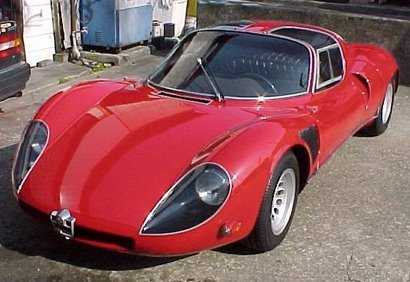
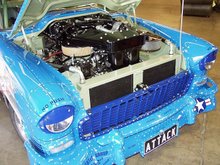
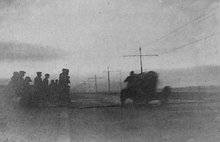


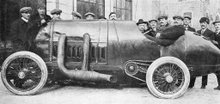


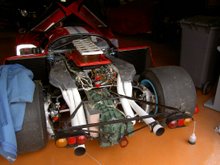

1 comment:
Another trick used in those days was the mentioning of SAE horsepower instead of the more realistic DIN. Alfa Romeo claimed about 103 SAE Hp from its GTV 1300 Junior engine while Lancia claimed a modest 90 DIN Hp from its 1.3S coupé. Both cars were equally fast but Alfa engines were always considered more developed and faster.
Post a Comment